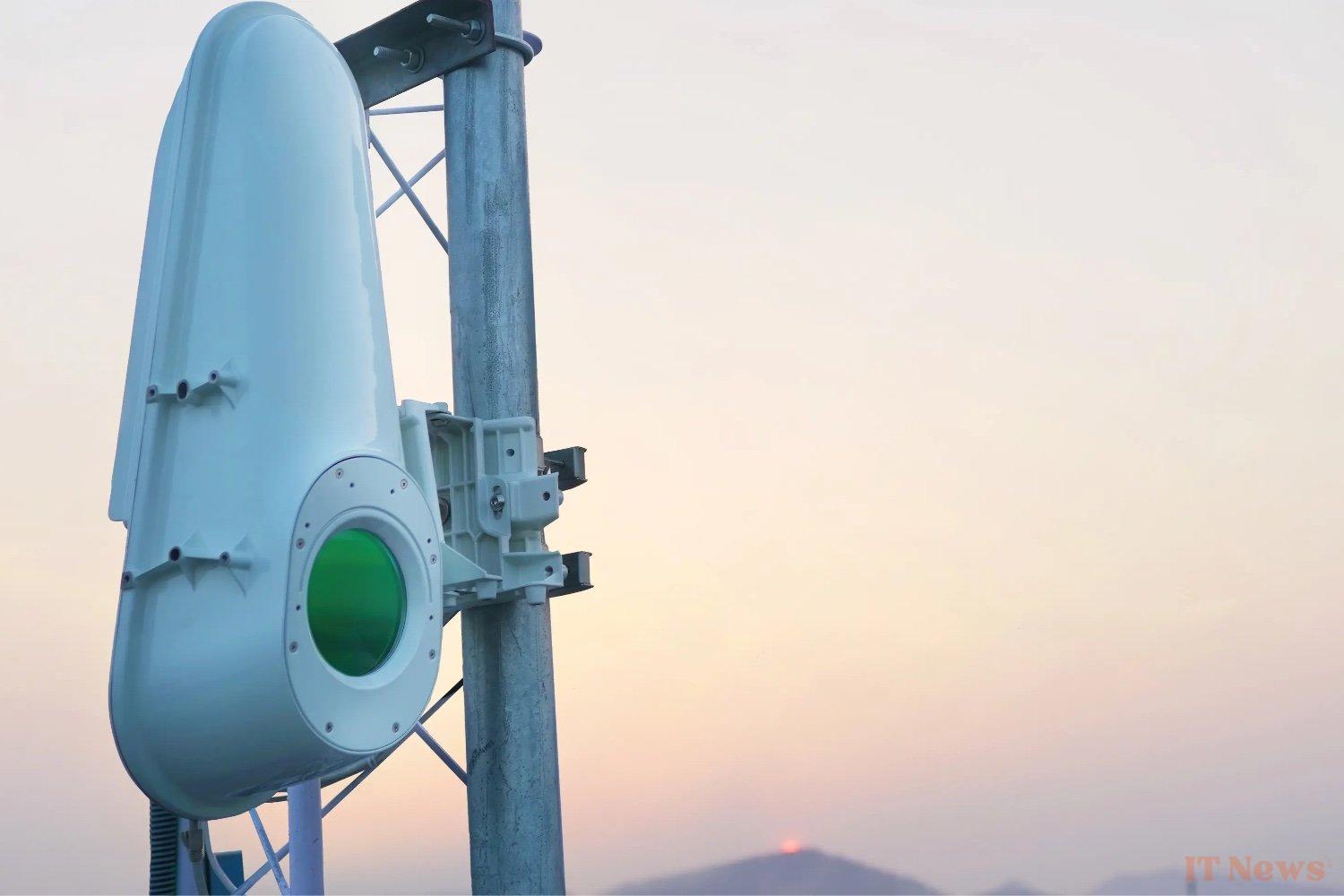Taara's idea didn't come out of nowhere. Before that, Google had experimented with stratospheric balloons with Project Loon. But flying antennas at an altitude of 20 km was a bit complicated (and especially expensive). As a result, Google abandoned the idea in 2021. Rather than throwing everything away, the engineers kept the laser technology and adapted it to a simpler, easier-to-use system. deploy.
Lasers to avoid cables
Taara is a pencil-sized laser beam that sends data at 20 gigabits per second over 20 km. The transmitters, as big as traffic lights, can be attached to poles, roofs, or even trees. No need to dig or lay cables, and it costs much less than fiber.
"We can offer 10, even 100 times more bandwidth than a standard Starlink antenna, for a much lower cost," explains Mahesh Krishnaswamy, boss of Taara. The technology has already proven itself with a 5 km laser bridge over the Congo River, connecting Brazzaville and Kinshasa, and has even been used to relieve the mobile network of the Coachella festival.
Now that Taara is flying on its own, the startup wants to move up a gear. Based in Based in Sunnyvale, California, the company has around 20 employees and is looking to grow quickly. Alphabet retains a minority stake in the company, but it has also raised funding from Series X Capital to accelerate its development.
Unlike Starlink, which sells subscriptions directly to users, Taara works hand in hand with operators like Bharti Airtel and T-Mobile. "Think of us as a complement that boosts and expands existing networks," says Mahesh Krishnaswamy.
But Starlink hasn't said its last word. With its 7,000 satellites and 4.7 million subscribers, Elon Musk's network is expected to generate $9.3 billion in 2023. Taara is in a different league, but it's counting on a key innovation to stand out: a tiny silicon photonic processor currently under development. This chip could replace the mirrors and lenses in current transmitters, making the technology even more efficient.
For Eric Teller, who heads the X incubator, "the world is going to run out of radio frequencies. Those who can use light to transmit data will have a head start." Taara still has a long way to go. do, but she already has a great asset in hand.



0 Comments